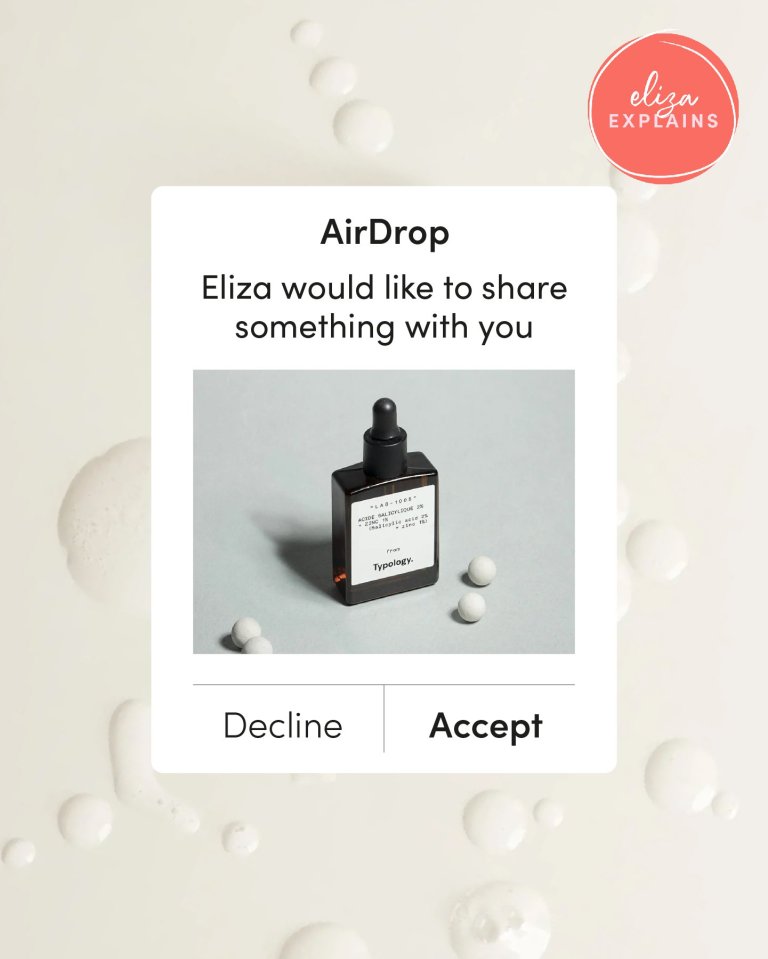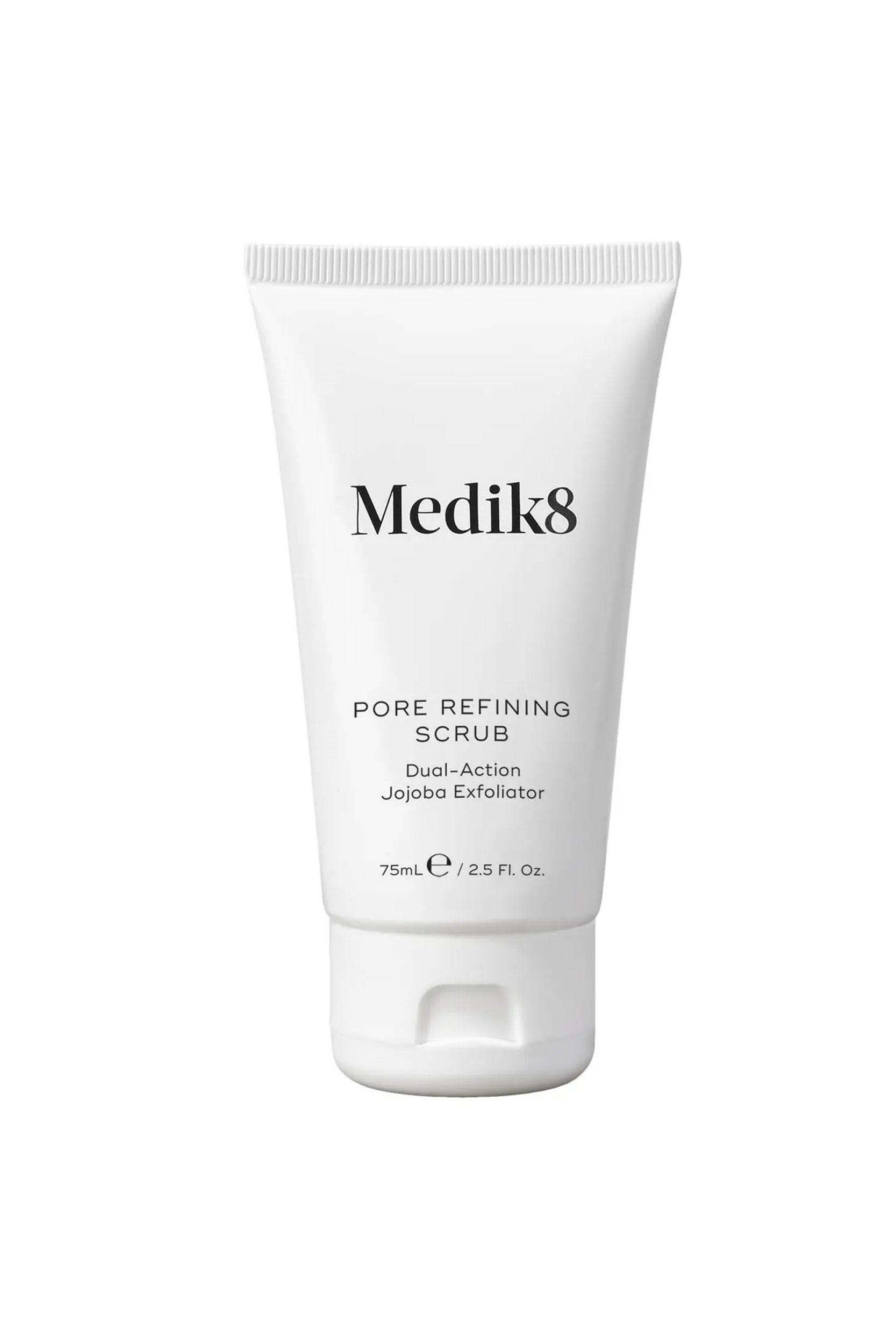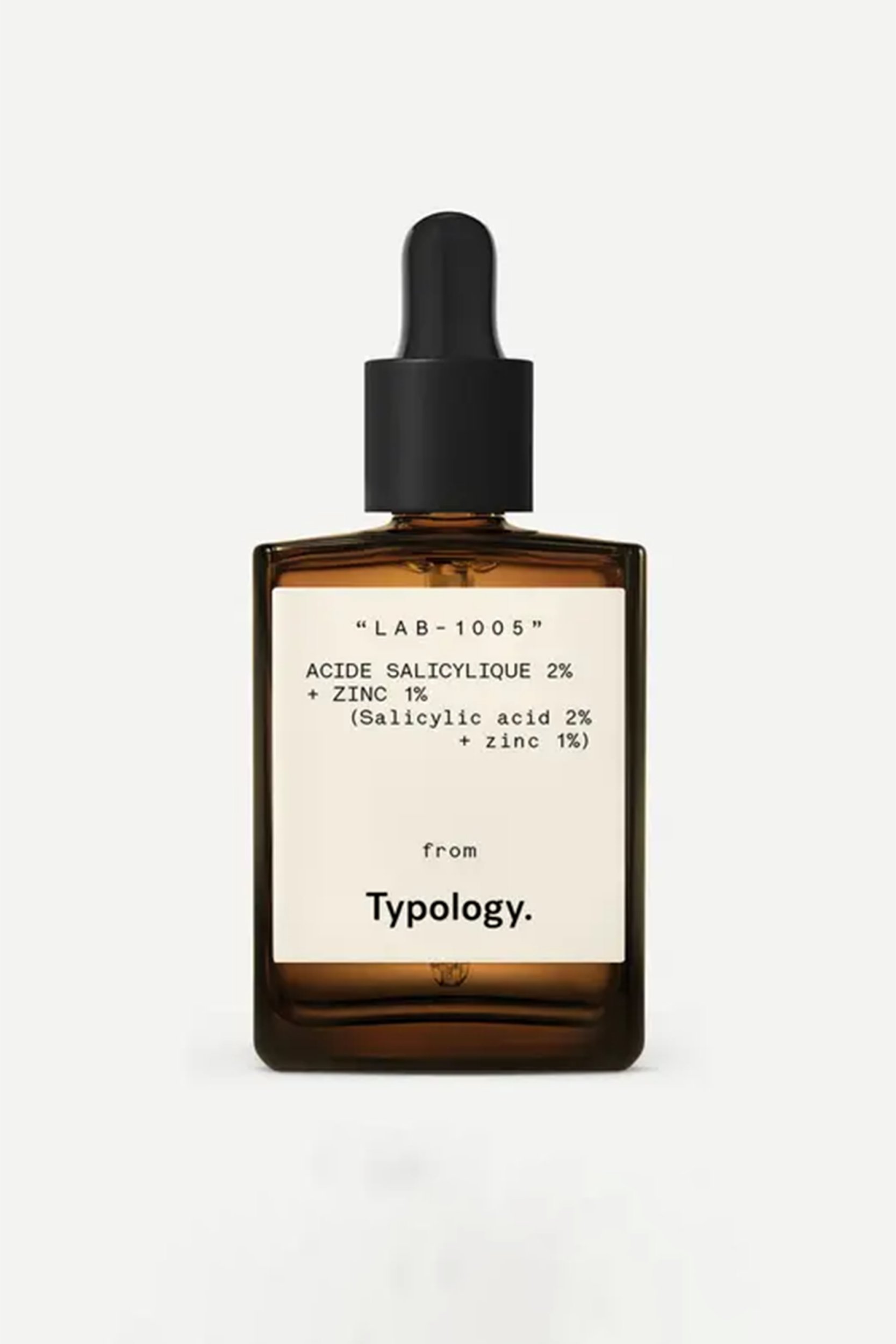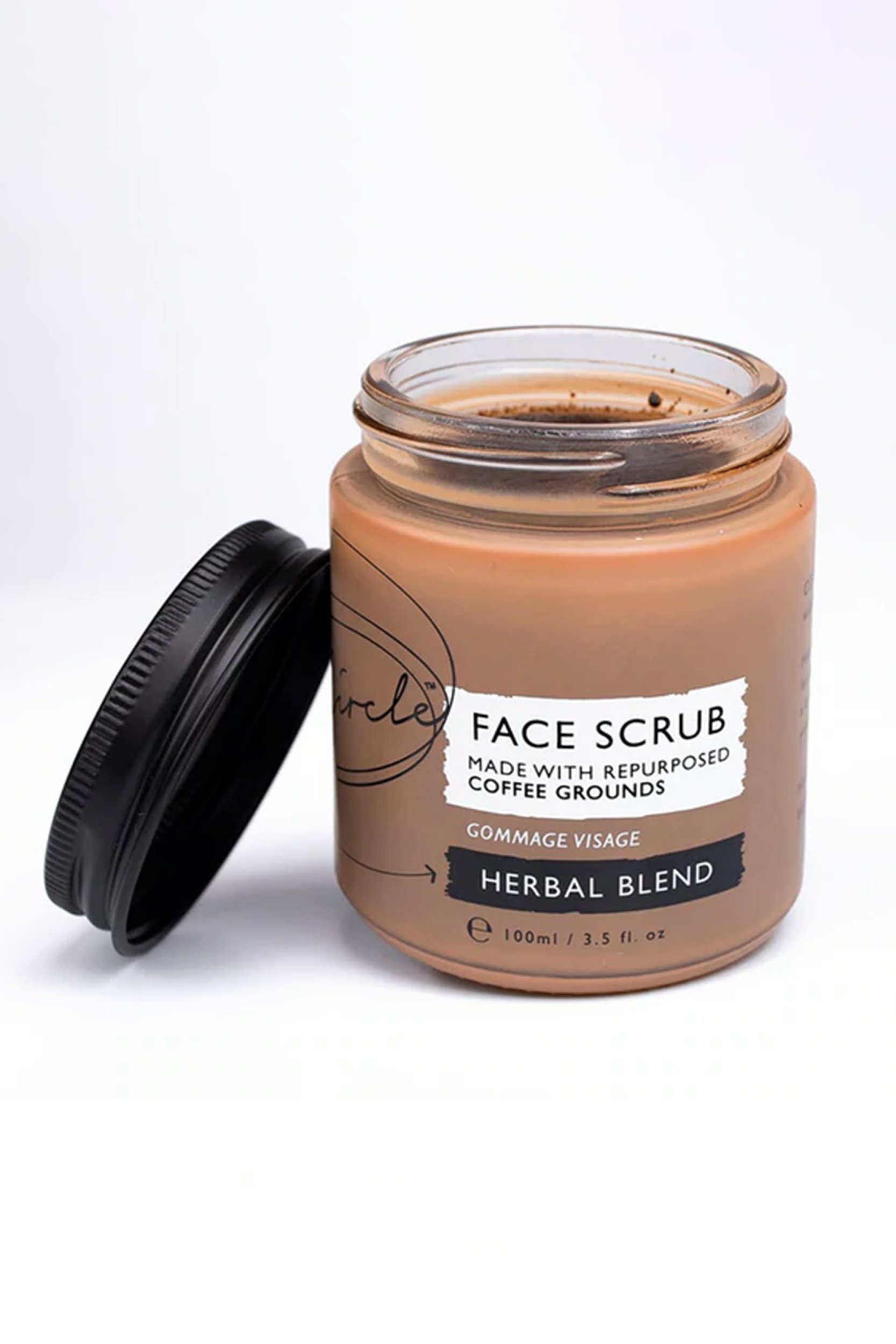Demystifying ingredients, clarifying how to apply products and revealing everything you’ve always wanted to know about skin types; Eliza Explains will help you become a beauty pro.
A natural, healthy glow is the ultimate in #SkinGoals. But blemishes and bumps can get in the way of that – and exfoliating your face regularly is the key to prevention.
While our skin naturally exfoliates itself every day, over time due to general ageing and sun exposure, the shedding process slows down and can even stop altogether (gulp). This results in a lacklustre complexion, clogged pores and uneven skin tone.
The change in seasons can also have an unwanted effect on our skin, with the colder months leaving us looking dull and lacking that radiance we often take for granted in summer. Getting that coveted glow back definitely isn’t impossible to achieve, however.
After years of refining a carefully-considered skincare regime and picking the brains of facialists and dermatologists around the world, I thought I’d share what I know so that you too can be well-versed in the best method of exfoliation for your skin type.
We’ve come a long way from aggressively scrubbing our faces with microbeads and the like, and the latest innovations and high-tech formulas in beauty see exfoliators come in many different forms. It can be tricky to navigate the shelves with hundreds of formulas out there, all promising to resurface, smooth and banish blemishes better than the next.
From scrubs to peels, and understanding which acid does what, I hope this guide on how to exfoliate clears things up. Pun totally intended.
First things first: what types of exfoliators are available? And how do they differ?
Physical exfoliators
Physical exfoliators buff away dead skin through abrasion; mainly exfoliating beads, a tool or brush (scrubs aside, Face Halo’s Glow Skin Set, £20, ASOS includes a brilliant new exfoliation pad and all you need is water).
If you have pesky dry patches or combination skin, this is the best starting point to break through initial build-up, as abrasion can gently remove the surface layer to reveal smoother skin.
However, if your skin is oily or congested with active breakouts, avoid granular scrubs as they can spread bacteria around your face. The legendary Dr. Howard Murad, dermatologist and founder of Murad Skincare, recommends finding a scrub that uses jojoba beads – not only are they biodegradable, but they won’t cause micro-tears in the skin.
Enzyme exfoliators
The most gentle form of exfoliation, enzymes help to dissolve dead skin cells without scrubbing. Unlike acids which work to remove both dead and living skin cells, enzymes only exfoliate dead skin cells and scar tissue. Mostly derived from fruits (namely papaya, pumpkin and pomegranate) they’re great for diminishing age spots, pigmentation and reviving dull skin.
Chemical exfoliators
“Chemical exfoliators like Alpha Hydroxy Acids (AHAs) and Beta Hydroxy Acids (BHAs) break the bonds that hold dead cells and debris to the skin’s surface so that they can be rinsed away,” explains Dr. Murad.
Acids are brilliant in refining skin texture and treating your pores. Dr. Murad recommends starting with a gentle product once a week and increasing the frequency and strength as your skin adjusts.
AHAs, BHAs, PHAs – it’s all so confusing. What do I actually need to know?
AHAs
You’ve probably heard of glycolic, citric and lactic acids; the most common types of AHA. They’re super effective in resurfacing the upper layers of the skin, and as they’re humectants (meaning they hold moisture in the skin), they’re the best kind of acid for drier skin types.
“The outermost layer of your skin is always the driest,” explains Dr. Murad. “Glycolic Acid works to accelerate the movement of fuller, hydrated skin cells to the surface to replace the dry skin.”
BHAs
Banish breakouts, enlarged pores and bumpy skin with BHAs. This oil-soluble acid works on both the skin’s surface and deep within the pores to flush out excess oil, sebum and bacteria.
“Salicylic acid is probably the most familiar type of BHA, known for its effectiveness in clearing clogged pores, keeping oil at bay and preventing blemishes,” says Dr. Murad.
PHAs
PHAs are the new(ish) kid on the beauty block – they’re the next-gen AHAs and the ingredients to look out for are gluconolactone, galactose, and lactobionic acid.
While they have similar exfoliating properties to their acidic counterparts, they have a larger molecular size, which means they don’t penetrate as deeply. This makes them ideal for those with super sensitive skin types, as they can work away on the surface of the skin without causing irritation to the deeper, more delicate layers.
But even if your skin concerns aren’t all about breakouts or ageing, “all skin types can benefit from a regime that regularly includes using Glycolic Acid and other AHAs, and BHAs [or PHAs] to remove the dull surface for a healthy, radiant complexion,” advises Dr. Murad.
How to exfoliate; how often and when in your routine should you do it?
“The most important thing to remember when it comes to exfoliation is not to overdo it; once or twice a week is sufficient,” warns Dr. Murad. It’s also crucial to use it on cleansed skin and always follow with a moisturiser. “The golden rule? The more you exfoliate, the more you need to hydrate,” he shares.
“Restoring your skin with hydration will help to rebalance the pH levels of the skin and replenish the moisture barrier.”
Products with higher strengths of acids should be used in the evening to let your skin repair overnight, and make sure you’re using an SPF every morning so you don’t leave your delicate skin vulnerable to sun damage (acids can increase sun sensitivity).
Scrub and peel your way to smoother skin…
Now you know the basics of how to exfoliate your face properly and the type of product that’s best for you, you’ll need the right products to help you get that smooth, glowing and healthy complexion you’ve dreamed of.
Best for: blemishes and acne scarring
Zap those zits with this innovative peel from Murad. Its unique bi-phase formula, when shaken, blends a resurfacing retinoid, glycolic acid and salicylic acid to clear out clogged pores, improve cell turnover and banish bacteria.
The best part? It’s gentle enough for everyday use thanks to the addition of soothing glycerin and plant extracts.
Best for: dry, flaky skin
Soften your skin with this velvety, dual-action facial scrub that has a powerful complex of both chemical and physical exfoliants.
First, the biodegradable jojoba grains delicately polish the surface of the skin to remove any build-up, while salicylic and mandelic acid work to extract any congestion deep within your pores. The result? A deeply cleansed, supple and smooth complexion.
Best for: blackheads and enlarged pores
This concentrated serum has been specially formulated with antibacterial actives to treat and prevent spots and localised breakouts.
It’s incredibly effective in cleaning and purifying the surface layers of the skin, and the added benefits of zinc strengthen the skin’s barrier function to protect from future flare-ups.
Best for: uneven and dull complexions
Swipe and go with these convenient resurfacing pads that I like to call a ‘flash facial in a pad.’
Loved by Kim Kardashian’s makeup artist Mario Dedivanovic, who uses them pre-makeup to prepare his client’s skin, the pad works quickly to revive the face thanks to glycolic acid and witch hazel.
Our top tip? If you suffer from keratosis pilaris, it also doubles up as a brilliant treatment to soften and smooth arms.
Best for: oily or combination skin
Buff away dry, dead skin cells with this face scrub that’s formulated with coffee, rosemary, thyme and tea tree essential oils – a brilliant blend for acne flare-ups.
Ingredients have been carefully selected for their antibacterial and antiseptic properties for clearer skin. The best part? The product has been made with repurposed high-quality Arabica coffee grounds and housed in fully recyclable packaging. Win, win.
Best for: sensitive skin and everyday use
If you’re prone to sensitivity and redness, or struggle to introduce your skin to chemical exfoliants, this will not disappoint.
PHAs are paired with zinc to gently resurface the skin and unclog pores, alongside a blend of barrier-boosting tri-ceramide complexes to keep your skin’s moisture levels at an optimal level.
Not only will it reveal a brighter and smoother complexion, but the anti-inflammatory blue tansy also helps to reduce any redness.

















